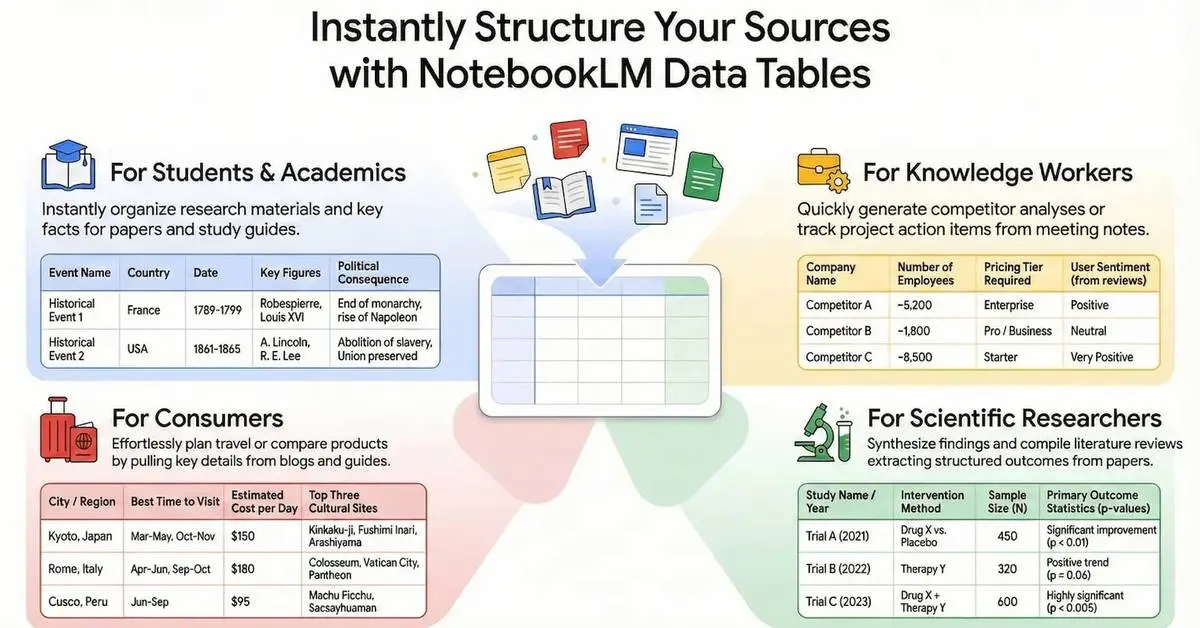AI and Space Lasers Revolutionize Forest Carbon Mapping for Climate Science
2 Sources
2 Sources
[1]
Space-laser AI maps forest carbon in minutes -- a game-changer for climate science
Satellite data used by archaeologists to find traces of ancient ruins hidden under dense forest canopies can also be used to improve the speed and accuracy to measure how much carbon is retained and released in forests. Understanding this carbon cycle is key to climate change research, according to Hamdi Zurqani, an assistant professor of geospatial science for the Arkansas Forest Resources Center and the College of Forestry, Agriculture and Natural Resources at the University of Arkansas at Monticello. The center is headquartered at UAM and conducts research and extension activities through the Arkansas Agricultural Experiment Station and the Cooperative Extension Service, the University of Arkansas System Division of Agriculture's research and outreach arms. "Forests are often called the lungs of our planet, and for good reason," Zurqani said. "They store roughly 80 percent of the world's terrestrial carbon and play a critical role in regulating Earth's climate." To measure a forest's carbon cycle, a calculation of forest aboveground biomass is needed. Though effective, traditional ground-based methods for estimating forest aboveground biomass are labor-intensive, time-consuming and limited in spatial coverage abilities, Zurqani said. In a study recently published in Ecological Informatics, Zurqani shows how information from open-access satellites can be integrated on Google Earth Engine with artificial intelligence algorithms to quickly and accurately map large-scale forest aboveground biomass, even in remote areas where accessibility is often an issue. Zurqani's novel approach uses data from NASA's Global Ecosystem Dynamics Investigation LiDAR, also known as GEDI LiDAR, which includes three lasers installed on the International Space Station. The system can precisely measure three-dimensional forest canopy height, canopy vertical structure and surface elevation. LiDAR stands for "light detection and ranging" and uses light pulses to measure distance and create 3D models. Zurqani also used imagery data from the European Space Agency's collection of Earth observation Copernicus Sentinel satellites -- Sentinel-1 and Sentinel-2. Combining the 3D imagery from GEDI and the optical imagery from the Sentinels, Zurqani improved the accuracy of biomass estimations. The study tested four machine learning algorithms to analyze the data: Gradient tree boosting, random forest, classification and regression trees, or CART, and support vector machine. Gradient tree boosting achieved the highest accuracy score and the lowest error rates. Random forest came in second, proving reliable but slightly less precise. CART provided reasonable estimates but tended to focus on a smaller subset. The support vector machine algorithm struggled, Zurqani said, highlighting that not all AI models are equally suited for estimating aboveground forest biomass in this study. The most accurate predictions, Zurqani said, came from combining Sentinel-2 optical data, vegetation indices, topographic features, and canopy height with the GEDI LiDAR dataset serving as the reference input for both training and testing the machine learning models, showing that multi-source data integration is critical for reliable biomass mapping. Why it matters Zurqani said that accurate forest biomass mapping has real-world implications for better accounting of carbon and improved forest management on a global scale. With more accurate assessments, governments and organizations can more precisely track carbon sequestration and emissions from deforestation to inform policy decisions. The road ahead While the study marks a leap forward in measuring aboveground forest biomass, Zurqani said the challenges remaining include the impact weather can have on satellite data. Some regions still lack high-resolution LiDAR coverage. He added that future research may explore deeper AI models, such as neural networks, to refine predictions further. "One thing is clear," Zurqani said. "As climate change intensifies, technology like this will be indispensable in safeguarding our forests and the planet."
[2]
Space lasers, AI used by geospatial scientist to measure forest biomass
Satellite data used by archaeologists to find traces of ancient ruins hidden under dense forest canopies can also be used to improve the speed and accuracy to measure how much carbon is retained and released in forests. Understanding this carbon cycle is key to climate change research, according to Hamdi Zurqani, an assistant professor of geospatial science for the Arkansas Forest Resources Center and the College of Forestry, Agriculture and Natural Resources at the University of Arkansas at Monticello. The center is headquartered at UAM and conducts research and extension activities through the Arkansas Agricultural Experiment Station and the Cooperative Extension Service, the University of Arkansas System Division of Agriculture's research and outreach arms. "Forests are often called the lungs of our planet, and for good reason," Zurqani said. "They store roughly 80% of the world's terrestrial carbon and play a critical role in regulating Earth's climate." To measure a forest's carbon cycle, a calculation of forest aboveground biomass is needed. Though effective, traditional ground-based methods for estimating forest aboveground biomass are labor-intensive, time-consuming and limited in spatial coverage abilities, Zurqani said. In a study recently published in Ecological Informatics, Zurqani shows how information from open-access satellites can be integrated on Google Earth Engine with artificial intelligence algorithms to quickly and accurately map large-scale forest aboveground biomass, even in remote areas where accessibility is often an issue. Zurqani's novel approach uses data from NASA's Global Ecosystem Dynamics Investigation LiDAR, also known as GEDI LiDAR, which includes three lasers installed on the International Space Station. The system can precisely measure three-dimensional forest canopy height, canopy vertical structure and surface elevation. LiDAR stands for "light detection and ranging" and uses light pulses to measure distance and create 3D models. Zurqani also used imagery data from the European Space Agency's collection of Earth observation Copernicus Sentinel satellites -- Sentinel-1 and Sentinel-2. Combining the 3D imagery from GEDI and the optical imagery from the Sentinels, Zurqani improved the accuracy of biomass estimations. The study tested four machine learning algorithms to analyze the data: Gradient tree boosting, random forest, classification and regression trees, or CART, and support vector machine. Gradient tree boosting achieved the highest accuracy score and the lowest error rates. Random forest came in second, proving reliable but slightly less precise. CART provided reasonable estimates but tended to focus on a smaller subset. The support vector machine algorithm struggled, Zurqani said, highlighting that not all AI models are equally suited for estimating aboveground forest biomass in this study. The most accurate predictions, Zurqani said, came from combining Sentinel-2 optical data, vegetation indices, topographic features, and canopy height with the GEDI LiDAR dataset serving as the reference input for both training and testing the machine learning models, showing that multi-source data integration is critical for reliable biomass mapping. Why it matters Zurqani said that accurate forest biomass mapping has real-world implications for better accounting of carbon and improved forest management on a global scale. With more accurate assessments, governments and organizations can more precisely track carbon sequestration and emissions from deforestation to inform policy decisions. The road ahead While the study marks a leap forward in measuring aboveground forest biomass, Zurqani said the challenges remaining include the impact weather can have on satellite data. Some regions still lack high-resolution LiDAR coverage. He added that future research may explore deeper AI models, such as neural networks, to refine predictions further. "One thing is clear," Zurqani said. "As climate change intensifies, technology like this will be indispensable in safeguarding our forests and the planet."
Share
Share
Copy Link
A groundbreaking study combines satellite data, space-based LiDAR, and AI algorithms to rapidly and accurately map forest carbon, potentially transforming climate change research and forest management.
Revolutionary Approach to Forest Carbon Mapping
In a groundbreaking study published in Ecological Informatics, Dr. Hamdi Zurqani, an assistant professor of geospatial science at the University of Arkansas at Monticello, has unveiled a novel method for mapping forest carbon using space-based technology and artificial intelligence. This innovative approach could significantly accelerate climate change research and improve global forest management
1
2
.
Source: Phys.org
The Importance of Forest Carbon Mapping
Forests play a crucial role in regulating Earth's climate, storing approximately 80% of the world's terrestrial carbon. Dr. Zurqani emphasizes, "Forests are often called the lungs of our planet, and for good reason"
1
. Accurate measurement of forest aboveground biomass is essential for understanding the carbon cycle, which is key to climate change research.
Source: ScienceDaily
Combining Space Technology and AI
Dr. Zurqani's method integrates data from multiple sources:
- NASA's Global Ecosystem Dynamics Investigation (GEDI) LiDAR system on the International Space Station
- European Space Agency's Copernicus Sentinel satellites (Sentinel-1 and Sentinel-2)
- Google Earth Engine platform
- Artificial intelligence algorithms
This combination allows for rapid and accurate mapping of large-scale forest aboveground biomass, even in remote areas
1
2
.AI Algorithms and Their Performance
The study tested four machine learning algorithms:
- Gradient tree boosting (highest accuracy)
- Random forest (second-best performance)
- Classification and regression trees (CART)
- Support vector machine (least effective)
The most accurate predictions came from combining Sentinel-2 optical data, vegetation indices, topographic features, and canopy height with the GEDI LiDAR dataset
1
2
.Implications for Climate Science and Forest Management
This new approach to forest biomass mapping has significant real-world implications:
- Improved carbon accounting
- Enhanced forest management on a global scale
- More precise tracking of carbon sequestration and emissions from deforestation
- Better-informed policy decisions for governments and organizations
1
2
Related Stories
Challenges and Future Research
While this study marks a significant advancement, some challenges remain:
- Weather impacts on satellite data
- Lack of high-resolution LiDAR coverage in some regions
Future research may explore deeper AI models, such as neural networks, to further refine predictions
1
2
.Conclusion
As Dr. Zurqani concludes, "As climate change intensifies, technology like this will be indispensable in safeguarding our forests and the planet"
1
2
. This innovative approach to forest carbon mapping represents a significant step forward in our ability to understand and manage Earth's vital forest ecosystems in the face of climate change.References
Summarized by
Navi
Related Stories
Evolutionary AI Unveils Optimal Land Use Strategies for Climate Change Mitigation
20 May 2025•Science and Research

Forest 4.0: AI and IoT Revolutionize Sustainable Forest Management
26 Nov 2024•Technology

Google-Backed AI Satellite Constellation Aims to Revolutionize Global Wildfire Detection
19 Sept 2024

Recent Highlights
1
Google launches Gemini 3 Flash as default AI model, delivering speed with Pro-grade reasoning
Technology

2
OpenAI launches GPT Image 1.5 as AI image generator war with Google intensifies
Technology

3
OpenAI launches ChatGPT app store, opening doors for third-party developers to build AI-powered apps
Technology





